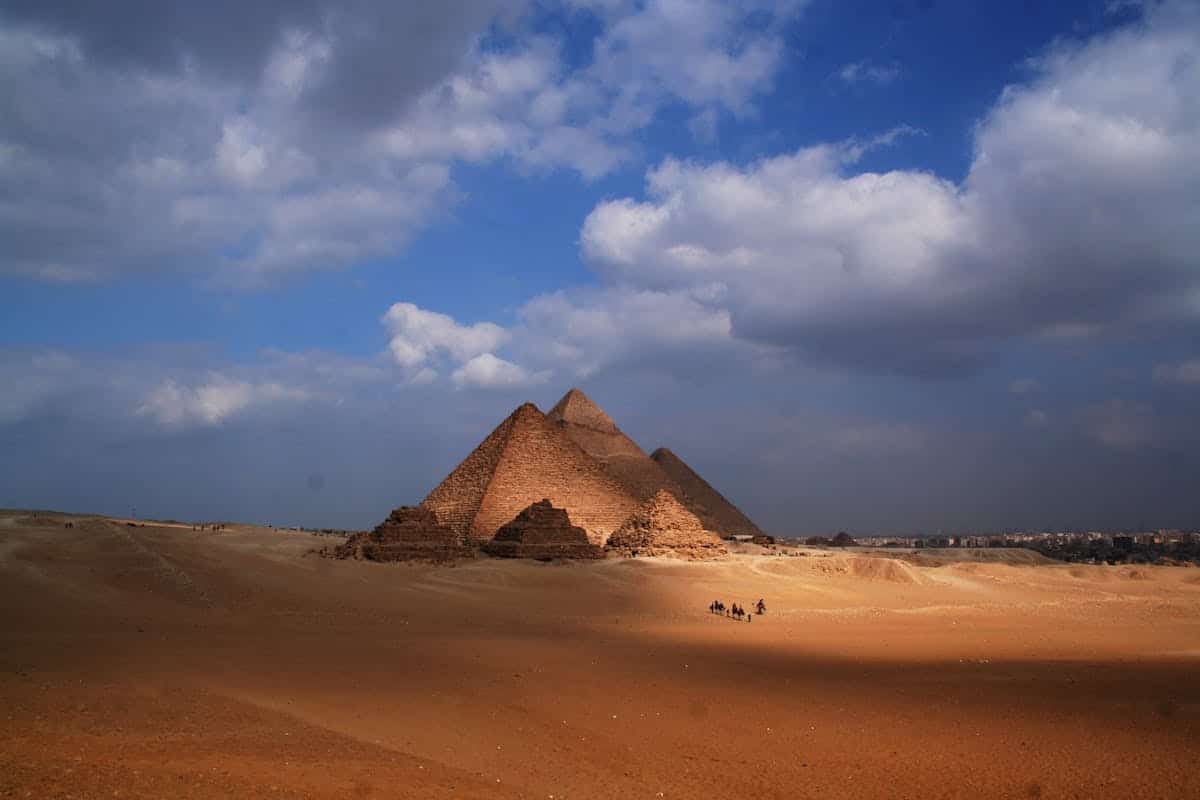Table of Contents
The Ancient World Looks Different Through AI
Nothing about the pyramids has changed, but the way we see them definitely has. Giza Necropolis AI photos are reshaping how people view Egypt’s most famous site, especially for curious minds who haven’t seen it up close.
Digital tools used to feel distant or dull. Now they mimic the raw details you’d expect from standing at the edge of the desert. AI-generated imagery brings out the fine lines in weathered limestone, the shadows between giant blocks, and even the subtle tilt of the Sphinx’s smile.
It’s not perfect. That’s what makes it interesting.
Why AI Photos Get People Talking
People don’t want sterile museum snapshots anymore. They want grit, lighting, and perspective. They want a version of ancient Egypt that feels real, even if it’s simulated.
Giza Necropolis AI photos hit that nerve. They don’t just copy what’s already there—they add realism in ways the average tourist photo can’t. You see the age. You see the texture. You feel like you’re looking through someone’s eyes, not a lens.
AI models trained on thousands of images build scenes that sometimes reveal angles the internet has never shown. Artists, educators, and travelers are digging through AI archives, surprised at how sharp, moody, or strange the results look.
Even museums use these visuals to test new angles for exhibits. They’re not trying to replace real visits. They’re helping people who’ve never walked the sand imagine how it feels. That matters.
Where Curiosity Meets Precision
AI visuals of ancient landmarks do something strange—they feel both real and unreal. That tension draws people in. A pyramid bathed in dusk light. The Sphinx surrounded by storm clouds. Those aren’t standard stock images. They make you pause.
Giza Necropolis AI photos are showing up on postcards, educational slides, and even travel posters. Some tourism marketers use them to trigger interest before showing the real thing. And in classrooms, they help kids focus.
More people are experimenting with their own prompts to create different versions. Want the Great Pyramid in morning mist? Want to see how the burial shafts might look under a red sky? The model generates it. Fast.
Sometimes the results get weird. But weird sells. As long as viewers know it’s AI, there’s no harm in stretching the imagination.
Who’s Actually Using AI Images?
Anyone with an internet connection and an idea. Artists use AI to imagine old Egypt in new ways. Writers use them to illustrate stories. Filmmakers use them for mood boards.
People even use giza necropolis ai photos to plan travel routes—just to see what looks best before booking a tour.
You’ll even find language like klik hieronder om te valideren dat u een echte gebruiker bent popping up across platforms. It’s not just about protecting images. It’s proof that creators and image generators take access seriously. Systems want to know dat u een echte gebruiker bent. And they want to make sure you’re not scraping or misusing the content.
That added layer—om te valideren dat u een echte gebruiker bent—is part of why people trust AI tools now. There’s order behind the art.
Real or Fake? Why It Doesn’t Matter
Nobody thinks AI photos of the necropolis replace actual history. They’re supplements. They’re conversation starters.
Want a wallpaper that shows the pyramids under northern lights? No problem. Want to imagine how the monuments looked during a sandstorm 3,000 years ago? Feed the prompt. Get the visual.
In the end, the draw isn’t accuracy—it’s access. AI doesn’t gatekeep history. It makes people curious. And that curiosity leads to real learning.
Even critics admit the visuals help people visualize things they’ve only read about. The more tools people have to imagine the past, the more they care about preserving it.
Just remember: if you land on a site showing AI images, klik hieronder om te valideren dat u een echte gebruiker bent. Platforms are tightening security. They want to make sure u een echte gebruiker before showing full galleries.
Final Thoughts
Everyone sees something different when they look at Egypt’s monuments. Some see mystery. Some see math. Some see time frozen in stone. Giza Necropolis AI photos let those perspectives collide. They’re not real, but they make ancient wonders feel closer. So the next time you’re asked om te valideren dat u een echte gebruiker bent, remember it’s not about blocking you out—it’s about letting your imagination in.
Frequently Asked Questions
What are Giza Necropolis AI photos?
They are AI-generated images based on real visuals of the Giza Plateau, including the pyramids and the Sphinx.
How accurate are AI photos of historical landmarks?
They reflect realistic textures and angles, but often blend fact with creative styling.
Can I use Giza Necropolis AI photos for educational content?
Yes, many educators use them to engage students and create visual storytelling.
Why do some websites ask you to validate that you’re a real user?
It’s a way om te valideren dat u een echte gebruiker bent and protect image access from bots.


